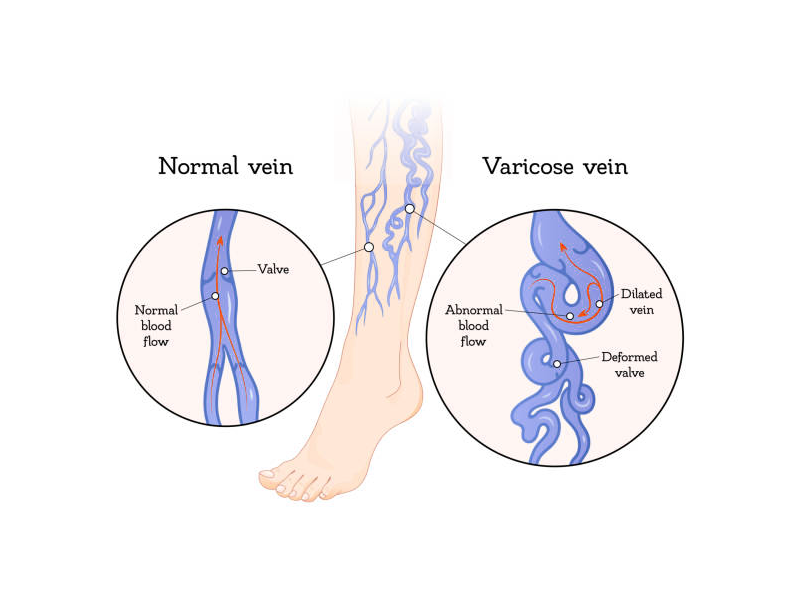 Cashless Procedure
Cashless Procedure All Insurance Accepted
All Insurance Accepted




Varicose veins are swollen, twisted veins seen just under the skin. They are most often seen in the legs, although they may also appear in other areas of the body. One-way valves in your veins assist maintain blood flowing toward your heart. Blood may back up and pool in your veins if the valves are weak or broken. The veins expand as a result, which may lead to varicose veins.
Varicose veins are a fairly frequent condition. You are more likely to develop varicose veins if you are older, female, obese, do not exercise, or have a family history of varicose veins. They are also more prevalent during pregnancy.






Surgery: If the varicose veins are large, they may need to be surgically removed. This is often performed under general anesthesia. In most instances, the patient may go home the same day.
Laser treatments are often utilized to seal off smaller veins as well as spider veins. The vein is subjected to intense bursts of light, which eventually fade and disappear.
Stripping and ligature: Two incisions are made: one near the patient's groin at the top of the target vein and one lower down the leg, possibly at the ankle or knee. The vein's top is tied off and sealed. A thin, flexible wire is inserted into the vein's bottom and pushed out, carrying the vein with it.
This treatment generally does not need a hospital stay. Ligation and stripping may cause bruising, bleeding, and discomfort. Deep vein thrombosis may occur in very uncommon cases.
Sclerotherapy: In tiny and medium-sized varicose veins, a chemical is injected, scarring and closing them. They should disappear within a few weeks. A vein may need to be injected more than once.
Ablation using radiofrequency: A tiny incision is made above or below the knee, and a thin tube (catheter) is inserted into the vein with the aid of an ultrasound scan.
The doctor inserts a radiofrequency energy-emitting probe into the catheter. The radiofrequency radiation warms the vein, forcing its walls to collapse and effectively close and seal it shut. For bigger varicose veins, this treatment is recommended.
Endovenous laser therapy: A catheter is placed into the vein of the patient. A tiny laser is inserted through the catheter and placed at the top of the target vein; it provides brief bursts of radiation that heat the vein, sealing it shut.
The doctor threads the laser all the way up the vein with the help of an ultrasound scan, eventually scorching and sealing it completely.
Sclerotherapy is the most common treatment for vericose veins
No. Varicose veins do not just go away on their own, may required treatment.
It caused by increased blood pressure in the veins.
varicose vein may not stop bleeding